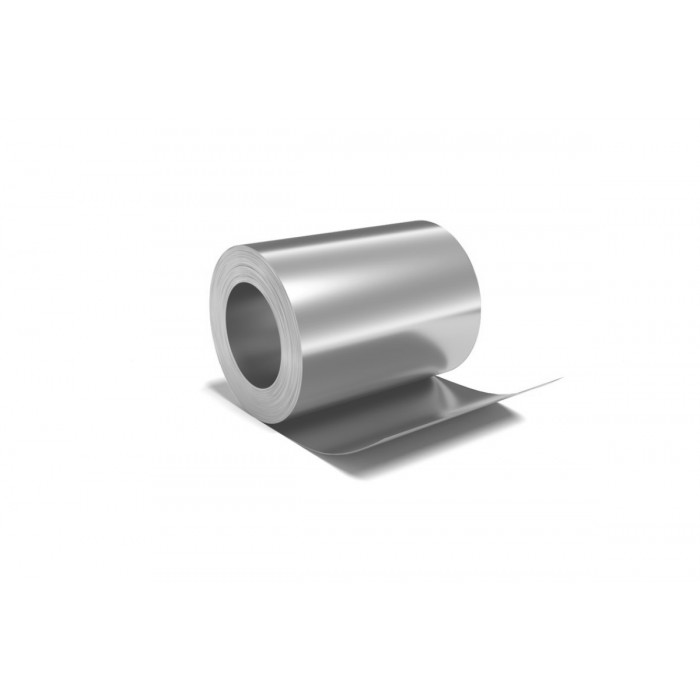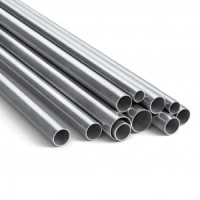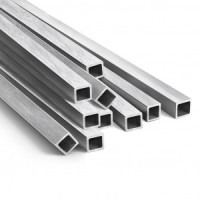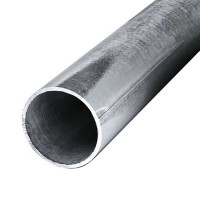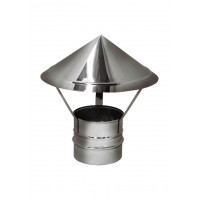Stainless foil 12х13 AISI 410 is the most common and popular stainless steel foil made from the corresponding steel grade. Stainless steel foil is used in many industries. It is difficult to imagine the aviation structure, fuel, chemical and food industries without the use of this foil. Stainless steel foil is used in electrical engineering, as well as wherever there is contact with various acids, oxidizing agents and solvents of medium concentration. In work, stainless steel foil 12X18H10T is very practical and convenient. It is quite soft, you can cut it with ordinary metal scissors, at the same time it is durable, it is recommended to use special protective gloves when working with it. Often stainless steel foil is used for heat shielding in high temperature processes. It is effectively used to protect parts and from corrosion during heat treatment. Stainless foil GOST 5632 is a foil with a low level of magnetism, high resistance to temperature amplitudes, good plasticity and durability.
There are several reasons for using stainless foil as a packaging material in the food industry:
- due to its production, namely high-temperature annealing, the material becomes sterile, which is simply necessary for safety when working with food;
- when heated, the foil will not melt or deform;
- provides a very strong barrier to prevent bacteria, moisture or oxygen from entering the products. This allows you to effectively and for a long time to store food without freezing.
Another area of use of aluminum foil, for the same reasons as in the food industry, has become pharmacology. The packaging of modern medicines, ointments and cosmetics must be absolutely vacuum, in order to avoid the ingress of various microorganisms, the harmful effects of which can adversely affect human health.
There are other important advantages of the above material - this is high thermal insulation and sound insulation. Thanks to these qualities, stainless foil has firmly occupied its niche in the fields of mechanical engineering and construction. It is used to insulate wires and walls. Among other things, this foil is a non-combustible material and does not accumulate static electricity, which makes the material one of the important criteria for assessing fire safety and makes it possible to avoid destructive consequences during and after various emergencies.
Stainless foil is used in the processing of almost all metal parts so that there is no metal corrosion process.
Foil is an excellent air insulator and vapor barrier, respectively, its use allows you to increase the thermal protection of the wall by about 2 times. However, there are nuances - the foil should only be used on the surface (outside or inside) of the wall, if you decide to put it in the middle, nothing good will come of it and all qualities will turn into nothing.
In addition to stainless, aluminum foil is very widely used, consider it also.
The production of aluminum foil is a rather long and complex process that takes place in several stages.
First, aluminum is melted in furnaces at a temperature of about 750 degrees Celsius, and the process can take several hours. After that, the molten metal is delivered to a special mold, where it cools and cools down. At the next stage, the top layer is removed so that the ingot becomes like a mirror. Further along the conveyor, this ingot passes through huge shafts, which crumple it and roll it out like a toy. This process lasts until a thin layer of aluminum foil is obtained from this huge ingot. After that, the foil is wound on special drums and cooled to achieve the required thickness.
The process itself is very exciting and interesting.
As for living conditions, even here it can not do without foil. Any housewife has used the oven more than once to prepare her signature dishes - so that the dish does not burn in the oven, it is covered with foil.
Many modern toys for children have aluminum foil in their composition. If you think about it, this material is used almost everywhere and everywhere: from street lamps to household appliances.
Thus, seemingly simple material - stainless foil - has firmly entered the everyday life of a modern person and the use of which makes life much easier for both a simple housewife and an engineer of a state enterprise.
Stainless steel foil is incredibly thin sheets of steel that have been machined.
These foils have some outstanding properties, including flexibility and lightness.
Stainless steel foil is thin strip less than 0.1mm thick and less than 600mm wide.
Forging or rolling is commonly used to process stainless steel foils. Once processed, they are often made to look like rolls of cloth. Producers acceptingTake this precaution to protect these sheets from damage and to facilitate storage and transport.
These stainless steel foils have the same properties and characteristics as steel. Stainless steel foil is most widely used due to its best properties such as durability, electrical resistance, and corrosion resistance.
What brand of stainless steel foil?
Families and grades describe stainless steel foils. Families describe individual characteristics and provide information on the proportions of different metals in an alloy..
There are four different families of stainless steel:
Austenitic Stainless Steel Foil
Ferritic Stainless Steel Foil
Duplex Stainless Steel Foil
Martensitic & Pre-hardening Stainless Steel Foil
However, the family only covers the major stainless steel grades. You have to consider the grade of stainless steel to fully understand what makes one type different from another.
Families are divided into classes that help describe the alloy's unique characteristics, such as its strength, magnetism, corrosion resistance, and composition.
The Society of Automotive Engineers created a three-digit identification system for high school students. (SAE). The unified number system (US) is now used to determine grades.
The most famous and commonly used family is the austenitic family.
Nickel and chromium are often present in this type of stainless steel foil. This family grade alloy is ideal for welding and has excellent corrosion and creep resistance.
The most common grades of austenitic stainless steel foil are:
301 stainless steel foil
304 stainless steel foil
316L stainless steel foil
321 stainless steel foil
Application of stainless steel foil
Stainless Steel Foil meets needs where other materials fail.
These foils are superior to aluminum foil and copper foil in corrosion resistance, strength, and electrical resistance.
As a result, stainless steel foil is a common choice for many applications.
Here are a few common uses for stainless steel foil:
Food business and kitchen items such as sinks, covers, and appliance parts.
Construction/Building materials such as architectural finishes, heat exchangers, agricultural equipment, medical equipment, beverage packaging, automobiles, and springs for precision machinery and devices such as printed circuit boards and electronic components and ship components all fall under this category.
Stainless steel foil for cooking
Lightweight metal-backed stainless steel foil can be easily used for food preparation, wrapping paper, or covering when preparing or storing food.
It is a multi-purpose item often used for a variety of household chores, many of which involve cooking.
It is particularly effective in minimizing moisture transfer when used to package refrigeration or freezing items.
Food can be tightly covered with stainless steel foil.
Stainless steel foil is a useful barrier to prevent overcooking of foods as it tolerates heat well in ovens or grills and can withstand high temperatures.
What brand of stainless steel foil is used for the thermal insulation layer?
Because stainless steel foil has a melting point significantly higher than aluminum, it will have a significantly better level of heat resistance.
The thermally insulated system is well protected by increased strength and durability.
Stainless steel grade 304 foil is the best material for an excellent thermal insulation layer in thermal insulation systems.
Stainless steel is often used where there is a risk of fire or extreme heat as it offers a significantly higher level of corrosion resistance than aluminum.
When properly installed, ensuring that the insulation keeps moisture out, stainless steel is durable and plays a key role in preventing corrosion within the insulation.
Stamping with 0.1mm thick stainless steel foil
Stainless steel is one of the most widely used steel alloys for custom stamping.
It can be deeply drawn, built, shaped, and stamped into various shapes, making it extremely adaptable.
Strong, durable, corrosion-resistant and impact-resistant stainless steel foils are used in the manufacture of components and products, making them ideal for wear parts and parts subjected to harsh conditions.
Precision stamping technology makes it easy to print 0.1mm 304 stainless steel foil.
Benefits of stainless steel foil
In addition to chemical stability, a high ratiostrength and weight, electrical insulation, and corrosion resistance, stainless steel foil also has a number of significant advantages.
Heat exchangers, condensers, medical equipment, and food processing equipment use stainless steel foil in their construction.
All grades of stainless steel and products made from them have many advantages and a wide range of applications.
Stainless steel foil also plays an important role in the production of various daily and industrial products due to its excellent corrosion resistance, durability and strength.
You can buy Stainless foil 12х13 AISI 410 from us at the best price in Ukraine. A wide range of products allows us to quickly and efficiently fulfill any order, helping to complete any construction work on time.
No questions about this product, be the first and ask your question.

